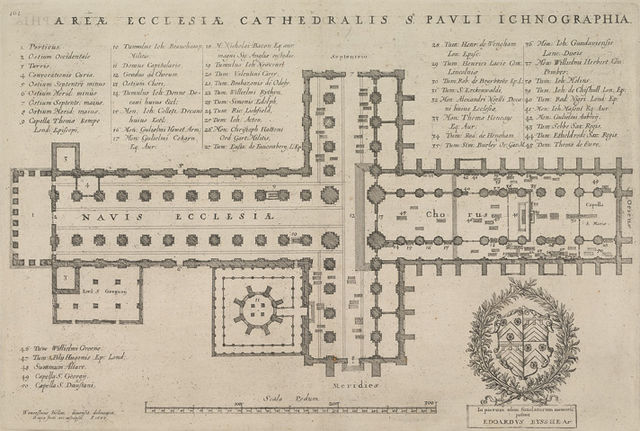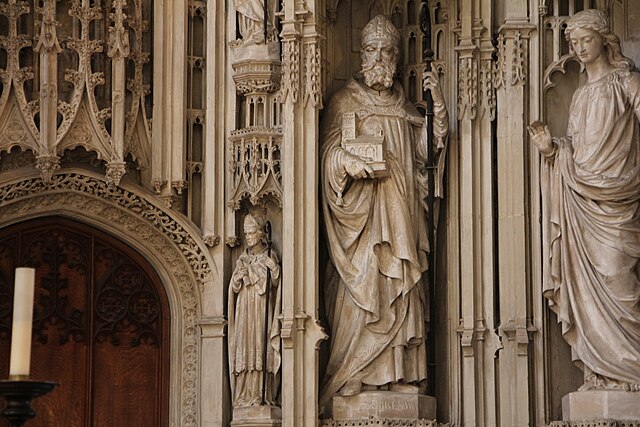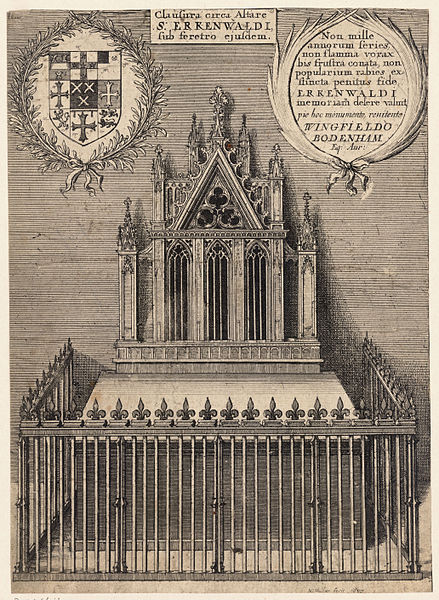Paul's walk in Elizabethan and early Stuart London was the name given to the central nave of Old St Paul's Cathedral, where people walked up and down in search of the latest news. At the time, St. Paul's was the centre of the London grapevine. "News-mongers", as they were called, gathered there to pass on the latest news and gossip, at a time before the first newspapers. Those who visited the cathedral to keep up with the news were known as "Paul's-walkers".
John Franklin's illustration of Paul's Walk for William Harrison Ainsworth's 1841 novel Old St. Paul's.
Wenceslas Hollar's engraving of the cathedral nave, "Paul's Walk".
1658 plan of the cathedral, by Wenceslaus Hollar
Old St Paul's Cathedral was the cathedral of the City of London that, until the Great Fire of 1666, stood on the site of the present St Paul's Cathedral. Built from 1087 to 1314 and dedicated to Saint Paul, this building was perhaps the fourth such church at this site on Ludgate Hill, going back to the 7th century.
Digital reconstruction giving an impression of Old St Paul's during the Middle Ages. The image is based on a model of the Cathedral in the Museum of London, composited with a modern city background.
St Erkenwald, foundational figure in the history of St Paul's Cathedral
Shrine of St Erkenwald, relics removed 1550, lost as a monument in the Great Fire of London
A 1916 engraving of Old St Paul's as it appeared before the fire of 1561 in which the spire was destroyed







